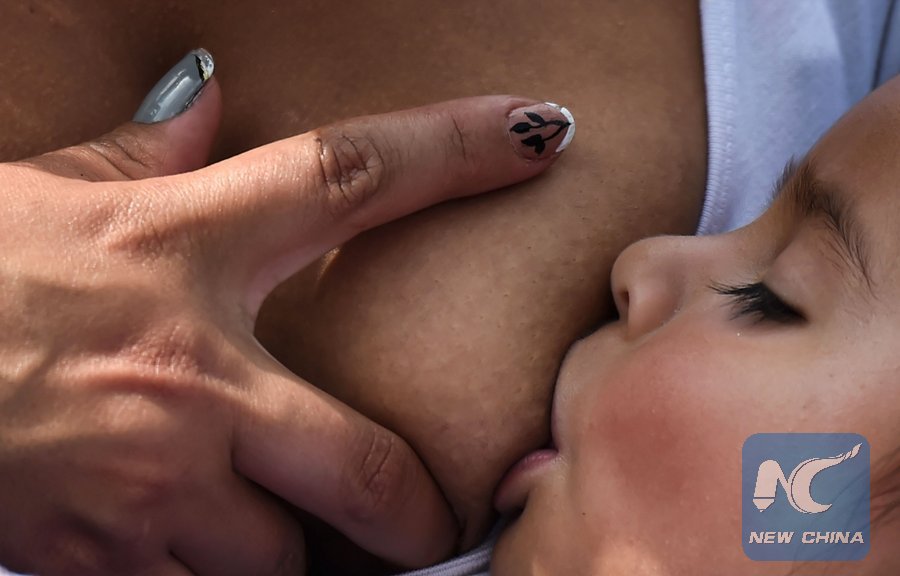
A woman breastfeeds her baby during a public event to promote the benefits of breastfeeding at a park in Bogota on Nov. 3, 2017. (Xinhua/AFP)
WASHINGTON, June 12 (Xinhua) -- The unique composition of sugars in a mother's breastmilk may prevent food allergies in her infant, according to a study published in the latest issue of Allergy.
The study highlighted the health role of human milk oligosaccharides (HMOs), which are not found in infant formula, suggesting a potential for therapeutic interventions.
HMOs are structurally complicated sugar molecules unique to human breast milk, and the third most abundant solid component in human milk after lactose, a different type of sugar, and fat.
They are not actually digestible by infants, but could help guide development of the infant gut microbiota, which previous research suggests is a key influencer of allergic disease.
Previous studies have shown that breastfed infants have a lower risk for a variety of medical conditions, such as wheezing, infections, asthma and obesity.
Researchers at the University of California (UC), San Diego School of Medicine and their colleagues in Canada analyzed breastmilk samples taken three-to-four months after birth from 421 infants and mothers.
Then, at one year of age, infants were given skin prick tests to check for allergic sensitization to common allergens, including certain foods.
The team found that 59 of 421 infants (14 percent) displayed sensitization to one or more food allergens at age one.
"Our research has identified a 'beneficial' HMO profile that was associated with a lower rate of food sensitization in children at one year," said Lars Bode, associate professor of pediatrics at UC San Diego School of Medicine, who led the study.
No individual HMO was associated with food sensitization, but the overall HMO composition appeared to play a role, according to the study.
Composition of HMOs in breast milk is variable and determined by factors like lactation stage, gestational age, maternal health, ethnicity, geographic location and breastfeeding exclusivity.
"A positive test is not necessarily proof of an allergy, but does indicate a heightened sensitivity," said Meghan Azad, a Canada Research Chair in Developmental Origins of Chronic Disease.
"Sensitizations during infancy don't always persist into later childhood, but they are important clinical indicators and strong predictors of future allergic disease," said Azad.

